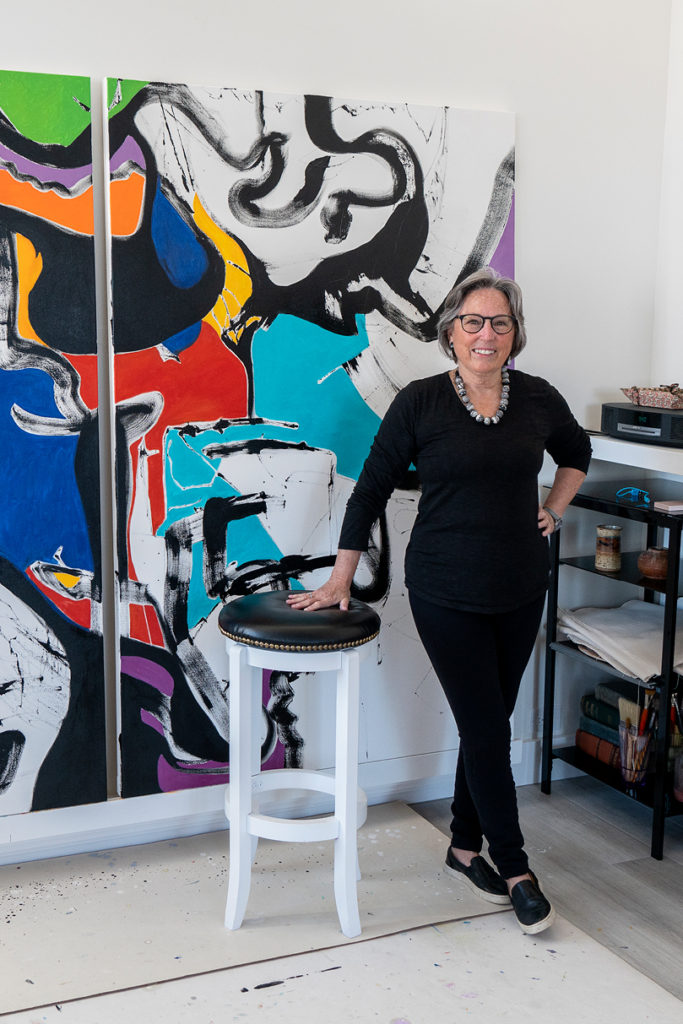
In the studio
Creating art is a multifaceted experience for me. From beginning to end, the creation of each painting is a spontaneous process. What do I mean? Often the story begins when I wake up in the morning: I have a thought or a feeling about a color, a texture, a movement or, occasionally, a work by another artist. Once in my home studio, I begin with a single mark on the canvas. The mark can be large or small, but it is the dynamic leader of the painting. It suggests – sometimes commands — what the next mark will be. I listen and respond. This dialogue, or conversation, between me and the marks on the canvas (or you might say, between me and my unconscious) continues until the artwork is complete.
The process is meditative, focused, and consuming. Time flies by without my even noticing it. The flow is satisfying but also challenging. From one mark to the next, nothing in the evolving story is preplanned, nothing is expected to be anything but what it turns out to be. Abstract art is a language which the viewer may or may not understand or relate to. It just is.
Some viewers see what for them are recognizable objects in my paintings. None of these were intended by me; often I do not see them until someone points them out to me. This experience can be intriguing, and at times disturbing. However, it has become an accepted part of the story of my creative endeavor. My brother used the word pareidolia (the perception of a recognizable image or meaningful pattern where none exists or is intended) to describe this experience. What a viewer sees in my paintings — animals, birds, plants, water, fish, people, sexual imagery — creates a canvas for open projections. I used to think that abstract art was truly abstract; I now know that my artwork can be like the clouds in which we see faces or objects. This is part of the pleasure that my work provides for me, and perhaps for others.